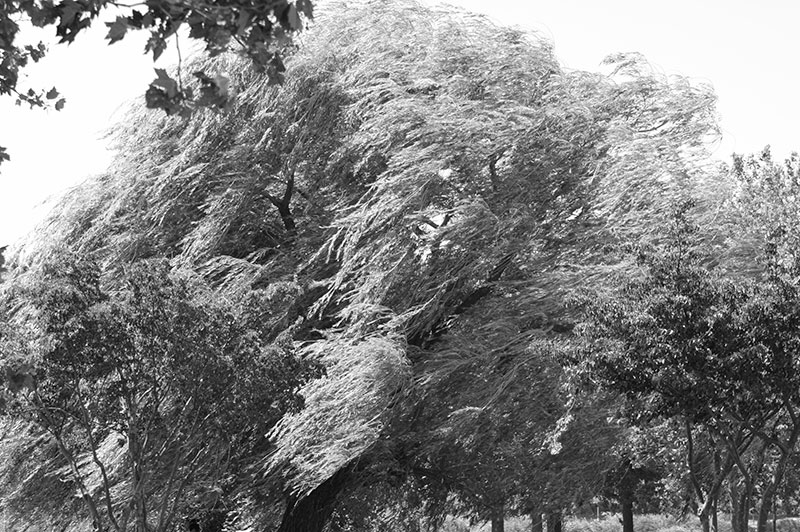
 Emergency Management311
Emergency Management311 Search all NYC.gov websites
Search all NYC.gov websites
High Winds

High winds are commonly associated with severe thunderstorms, tornadoes, and coastal storms and hurricanes; however, they may also occur because of differences in air pressures, such as when a cold front passes across the area.
High winds can cause downed trees and power lines, and flying debris, which may lead to power outages, transportation disruptions, damage to buildings and vehicles, and serious injury.
Know the Terms
- Wind Watch: issued by the National Weather Service when sustained winds are 25 to 39 mph and/or gusts to 57 mph.
- High Wind Warning: issued by the National Weather Service when high wind speeds may pose a hazard or are life threatening. The criteria for this warning vary from state to state.
What to Do Before a High Wind Event
- Notify NYC, the City of New York's official, free emergency communications program, will alert New Yorkers if there is an emergency in your area. Register for emergency notifications by getting the free Notify NYC mobile application, visiting NYC.gov/notifynyc, contacting 311 (212-639-9675 for Video Relay Service, or TTY: 212-504-4115) or following @NotifyNYC on Twitter. (Notify NYC messages are available through many formats, including email, text messages, telephone, the Notify NYC website, RSS, Twitter, and American Sign Language videos.)
- Pay attention to local weather forecasts and bulletins issued by the National Weather Service on local radio stations.
- To prepare for a possible power outage, make sure cell phone batteries are charged, gather supplies, and turn refrigerators and freezers to a colder setting.
- If you are a property owner, builder, contractor, and/or crane operator, secure your construction site(s), building(s), and equipment.
- Bring inside loose, lightweight objects such as lawn furniture, potted plants, garbage cans, garden tools, and toys.
- Anchor objects that would be unsafe outside, such as gas grills or propane tanks.
- Close up and secure patio umbrellas.
- Secure retractable awnings.
- Remove aerial antennas and satellite television dishes.
What to Do During a High Wind Event
- Beware of falling branches if you are near trees.
- If you are affected by an outage, turn off all appliances and keep refrigerator and freezer doors closed to prevent food spoilage.
- If you lose power and have a disability, access or functional needs, or use Life Sustaining Equipment (LSE) and need immediate assistance, please dial 911.
- Do not use generators indoors.
For more information about what to do during a utility disruption, visit the Plan for Hazards: Utility Disruptions page.
What to Do After a High Wind Event
- Continue to pay attention to local weather forecasts and bulletins issued by the National Weather Service on local radio stations.
- Always stay clear of downed power lines.
- Call 311 (212-639-9675 for Video Relay Service, or TTY: 212-504-4115) to report downed trees.
What the City Does
The City works closely with the National Weather Service to monitor severe weather threats that could affect the five boroughs. The City uses several forms of outreach to alert the public in an emergency, including Notify NYC, the City of New York's official emergency communications program.
If high winds cause downed trees, power lines, and other hazards, NYC Emergency Management will coordinate the response to these safety hazards with other City agencies, and notify the public to avoid dangerous areas or blocked roadways.
More Resources
- To learn more about past weather events, visit the National Climatic Data Center's storm events database.
- To learn more about high winds, see the Hazard Mitigation Plan's profile on high winds and the hazard, history and consequence tool to learn more about past wind events.


